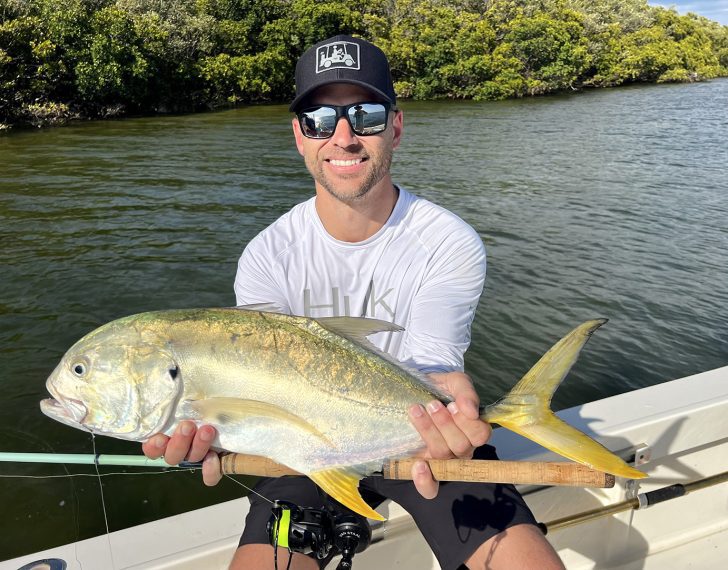The Mighty Jack is Back
Tampa Bay used to be loaded with jack crevalle but, for the past decade, their numbers had dwindled to the point that I might catch one every couple of weeks. Well, by what I’ve been seeing lately, the jack is back!
For the past six months, I’ve encountered three different school sizes of jack crevalle on a regular basis. One with fish ranging 8 to10 inches, another school measuring roughly 16 to18 inches and, the largest school of all, a whopping 28 to 30 inches. The two smaller school sizes go mostly unnoticed, unless you happen to be chumming for other species with live bait. Not so with the larger school of jacks; you can see them devouring bait fish as they cruise across the grass flats a hundred yards away.
Should you be fishing and witness a school of these mammoth jacks heading your way, start broadcasting more live bait chum. As soon as they see the freebees, some will erupt on the bait, giving you time to cast towards them. Prior to making a cast, grab a rod slightly stiffer than you normally use on the flats (if available) because, pound for pound, large jacks are some of the hardest fighting fish in the Tampa Bay.
Want to pick a bigger fight?
Tarpon are literally everywhere throughout Tampa Bay. They’re around every bridge from the Skyway to the Courntney Campbell, at every port and in every main deep-water channel.
There are many methods for catching tarpon, but my favorite is sight casting live pass crabs or live bait to schools of daisy chaining fish. The thrill of the thump as it picks up your bait, and the sound of the drag screaming as line rips off the spool, is second to none.
For tackle, I’m still using my 27-year-old, eight-foot medium mod-fast, G-Loomis, Surf Series rod. I have it paired with a Penn Spinfisher 6500 reel loaded with 200 yards of 50-pound braided line and the appropriate amount of backing. For terminal tackle, I use six feet of 60-pound fluorocarbon leader with a 6/0 hook.
Since I’m mentioning hard fighting fish, I’ve got to throw cobia in the mix.
Many times, when anchored and tarpon fishing, cobia will approach your boat, especially if you’re chumming while fishing. The same can be said if you’re anchored and cut bait chumming for mangrove snapper or other species. Cobia have a knack for showing up unexpectedly. The key to successfully catching one is being ready with the right tackle.
Tarpon tackle works fine for cobia, it’s a little overkill, but at least you shouldn’t lose any fish. For the unexpected encounter, I always keep a fake eel rigged on one of my rods. If I’m chumming and a cobia comes up in my slick, I will have someone cast a fake eel past it at an angle and work it back in front of it. While they’re doing that, I’ll hook up a live bait and have someone toss the live bait out in front of it, if it doesn’t take the eel.
Once you get a hookup, slow down and enjoy the ride. Cobia make long runs and do a lot of zig zagging in an attempt to escape. It takes quite a while to wear cobia down before bringing them into the boat, so be patient.
Cobia’s minimum size for harvest is 33 inches to the fork, so be absolutely sure it’s big enough before you stick it with a gaff. Once it’s brought on board, I always put it straight in my fish box and close the lid. If you don’t have that capacity on your boat, place it on the deck and step back. Large cobia can do significant damage while thrashing around until it expires.
There are many hot spots to target cobia around Tampa Bay. Start by checking out the channel marker buoys, range markers or bridge pilings. Any of the bay’s deep water grass flats are also ideal. If you’re on the flats, pay particular attention if you see any manatees or large stingrays. Cobia love company. You will often see them swimming in pairs or groups. I’ve seen as many as 10 in one group. It’s a sight to be seen!
Should you get lucky enough to boat two cobia, you’re done! There is a strict two fish per vessel limit on the Gulf Coast.
Afishionado, “Always an Adventure.”

